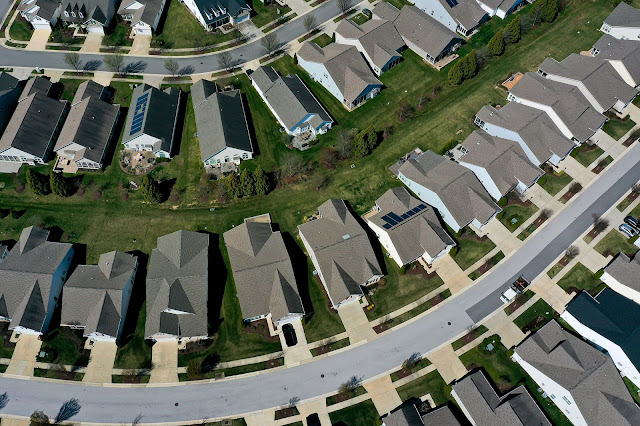U.S. Housing Market Shock May 2025: Luxury Homes Skyrocket, Middle Class Locked Out
1. Luxury Homes Are Breaking the Bank 🤑
The U.S. real estate market on May 16, 2025, is a wild ride, and luxury homes are stealing the spotlight. From Miami’s glitzy waterfront condos to Aspen’s sprawling mountain estates, the ultra-wealthy are snapping up properties like they’re collecting rare Pokémon cards. Despite economic headwinds, the National Association of Realtors (NAR) reports that Q1 2025 saw 125,000 luxury home sales (priced above $5 million), a 10% jump from last year. In May alone, deals are closing at lightning speed, with billionaires and tech moguls chasing homes that scream prestige and long-term value. Think private elevators, infinity pools, and AI-powered security systems—these aren’t just houses; they’re lifestyles.
Key Points:
Miami’s Aston Martin Residences are nearly sold out, with units boasting yacht docks and panoramic views.
Silicon Valley’s elite are dropping millions on eco-friendly estates with solar grids and smart-home tech.
Bidding wars in coastal markets like Malibu and the Hamptons are pushing median luxury prices to $7.5 million, up 12% from Q1.
2. Middle-Class Dreams on Hold 😓
For the average American, buying a home in May 2025 feels like trying to catch a unicorn. Median home prices have climbed to $428,000, a 4.8% increase from Q1 2024, according to NAR data. Pair that with mortgage rates stuck at 6.9% for a 30-year fixed (Freddie Mac), and first-time buyers are getting priced out left and right. Cities like Austin and Denver, once affordable hotspots, are now out of reach for many. But don’t lose hope—experts say suburban markets and fixer-uppers could be your ticket in if you’re strategic.
Key Points:
Suburbs like Charlotte, NC, and Boise, ID, are gaining traction for their relatively lower prices and remote-work appeal.
Inventory is up 5% from last year, with 1.3 million active listings, giving buyers a bit more breathing room.
High construction costs are slowing new builds, keeping supply tight and prices stubborn.
3. Investors Are Cashing In Big 💰
If you’ve got money to play with, the U.S. real estate market is a goldmine in 2025. Investors are going all-in, from hedge funds scooping up warehouses in logistics hubs like Dallas to savvy individuals flipping short-term rentals in touristy spots like Orlando. CBRE data shows industrial real estate (think Amazon fulfillment centers) has a record-low vacancy rate of 3.2%, while vacation rental markets are seeing 15% year-over-year revenue growth. Real estate investment trusts (REITs) focused on multifamily and industrial properties delivered 13% returns in Q1, making them a hotter bet than the stock market.
Key Points:
Short-term rentals in cities like Nashville and Scottsdale are thriving, with average daily rates up 12%.
Opportunity Zones in places like Detroit and Birmingham are drawing investors with tax breaks and high ROI potential.
Commercial real estate in logistics is booming, driven by e-commerce and supply chain demands.
4. Commercial Real Estate: A Tale of Two Markets
The commercial real estate scene in May 2025 is like a split personality. Office spaces are still struggling, with vacancy rates in cities like San Francisco hitting 21% as hybrid work sticks around. Landlords are slashing rents and throwing in perks like free coffee bars to lure tenants. Meanwhile, retail and hospitality are making a comeback. Suburban malls are being transformed into mixed-use hubs with coworking spaces, gyms, and trendy eateries. CBRE notes a 9% uptick in retail leasing activity since Q1 2024, signaling a shift toward spaces that feel like destinations.
Key Points:
Class A offices with amenities like rooftop lounges are outperforming older buildings by 20% in occupancy.
Hotels in Miami and Las Vegas are reporting 87% occupancy, a post-pandemic high.
Adaptive reuse—turning old offices into apartments—is gaining steam in urban areas like Chicago.
5. What’s Next? Stay Sharp! 🚀
The U.S. real estate market in May 2025 is a high-stakes game, and only the sharpest players will come out on top. Luxury buyers will keep pushing prices to the moon, while middle-class folks need to get creative with suburbs or co-buying strategies. Investors, you’re in the driver’s seat—focus on short-term rentals or industrial properties for max returns. Keep an eye on the Federal Reserve; any rate cuts could flip the script. Pro tip: use tech platforms like Zillow or Redfin to spot deals fast, and don’t sleep on emerging markets like Raleigh or San Antonio. This market’s a beast, but with the right moves, you can win big.
Key Points:
Sustainability is non-negotiable—70% of new homes in 2025 have energy-efficient features like solar panels.
Foreign investors from Asia and Europe are pouring $50 billion into U.S. real estate, drawn by stability.
Tech tools are your friend: AI-powered apps can predict market trends and help you snag undervalued properties.

Posting Komentar